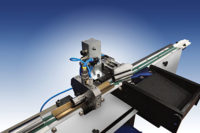ISO 9000 is more of a hindrance than a help for companies that want to achieve superior quality and use quality as a strategic advantage. I've been spreading this message in various forums during the last several months, and while I've received tremendous support, it's a message that has also sparked consternation in some circles.
I do agree with ISO 9000 supporters that the standard can be an effective stepping stool to transform a poorly performing quality system into one that meets customer requirements. But that is where the standard draws the line -- at just meeting customer expectations. If you believed all the hype about ISO 9001 being a guide to superior quality, then you were misled just like I was. Now that I've managed our ISO 9000 program for four years, I regret being a champion for it.
Being an advocate of run-of-the-mill quality is not very rewarding, of course. That's why ISO 9001 supporters feel the need to push the standard beyond its stated requirements. They claim that ISO 9001 should be used as a launching pad, or foundation, to develop quality further. In other words, if your goal is superior quality, you need to add something on top of the ISO 9001 stepping stool.
The right approach, say proponents, is to start adding things to your quality system's foundation that go beyond the ISO 9001 requirements. Possible ISO 9001 add-ons include using the ISO 9004 guidelines to do more than the standard requires. Others suggest using the Malcolm Baldrige National Quality Award criteria as the guide to superior quality, after the ISO 9001 foundation is set.
While that may sound great coming from the ISO consultant who just sold you thousands of dollars of services to help you achieve what amounts to a mediocre quality system, those in the trenches know it doesn't work that way. The structure of the ISO standard itself works as a disincentive to doing more, in at least a couple of ways.
First, ISO 9001 is a pass/fail standard. You get a certificate if you pass the audit, and no certificate if you fail the audit. The certificate gives your customers no indication of whether your company has world-class quality or "just-barely-meeting-customer-requirements" quality. In efficiency-minded organizations, this pass/fail structure breeds a just-enough-to-get-by mentality. "Why should we expend any more effort on quality if e are already passing?" the reasoning goes. This tendency is made worse by the quality community that has de-emphasized its continual improvement focus for the ISO 9000 mantra, and has sent an inaccurate message to top management that ISO 9001 certification equals excellent quality.
A second inhibitor is the inordinate and often unnecessary paperwork burden that any ISO-auditable change brings with it. Under ISO, every quality system enhancement triggers enormous documentation changes that make quality managers question whether the benefits of the change are worth the effort.
It is widely accepted, and even documented in studies, that quality managers feel that ISO's overhead and paperwork are excessive and extremely inefficient. Why would a quality manager ever invest more than he or she absolutely has to in an inefficient system?
In the quality system that I manage, I've developed a special skill at wordsmithing process documentation that goes beyond the standard. I am careful to describe process improvements in a manner that make them nonauditable, or external to our "ISO Quality System." And I know other quality managers who do the same thing. It's a shame that we have to do that.
What should we do now? At your company, you can start by questioning if your ISO 9000 registration is the most effective use of your resources. If your customers require that your quality system be audited, look for substitutions, such as self-assessing to the quality-centric Baldrige criteria. This method of assessment actually measures the effectiveness of the entire organization and encourages continual improvement, instead of just meeting the minimum standard set by ISO.
You don't need an ISO 9001 foundation to use the Baldrige criteria. Also, understand that you don't need a pre-packaged quality program. Focus on the powerful and effective basics from the ASQ body of knowledge and get back to bottom-line, results-producing continual improvement efforts instead of standards policing and paperwork.
The purpose of this column is to spark a discussion to make the quality profession better. While I acknowledge that this column may have a negative tone, I'm not being negative to cut down the quality profession. I'm trying to identify and define a problem that needs to be fixed for the health of our profession. I'm a passionate quality advocate. Please e-mail me and let me know if you agree or disagree. I want to hear what changes you think are needed to reposition quality professionals back to the role of valuable change agents.
